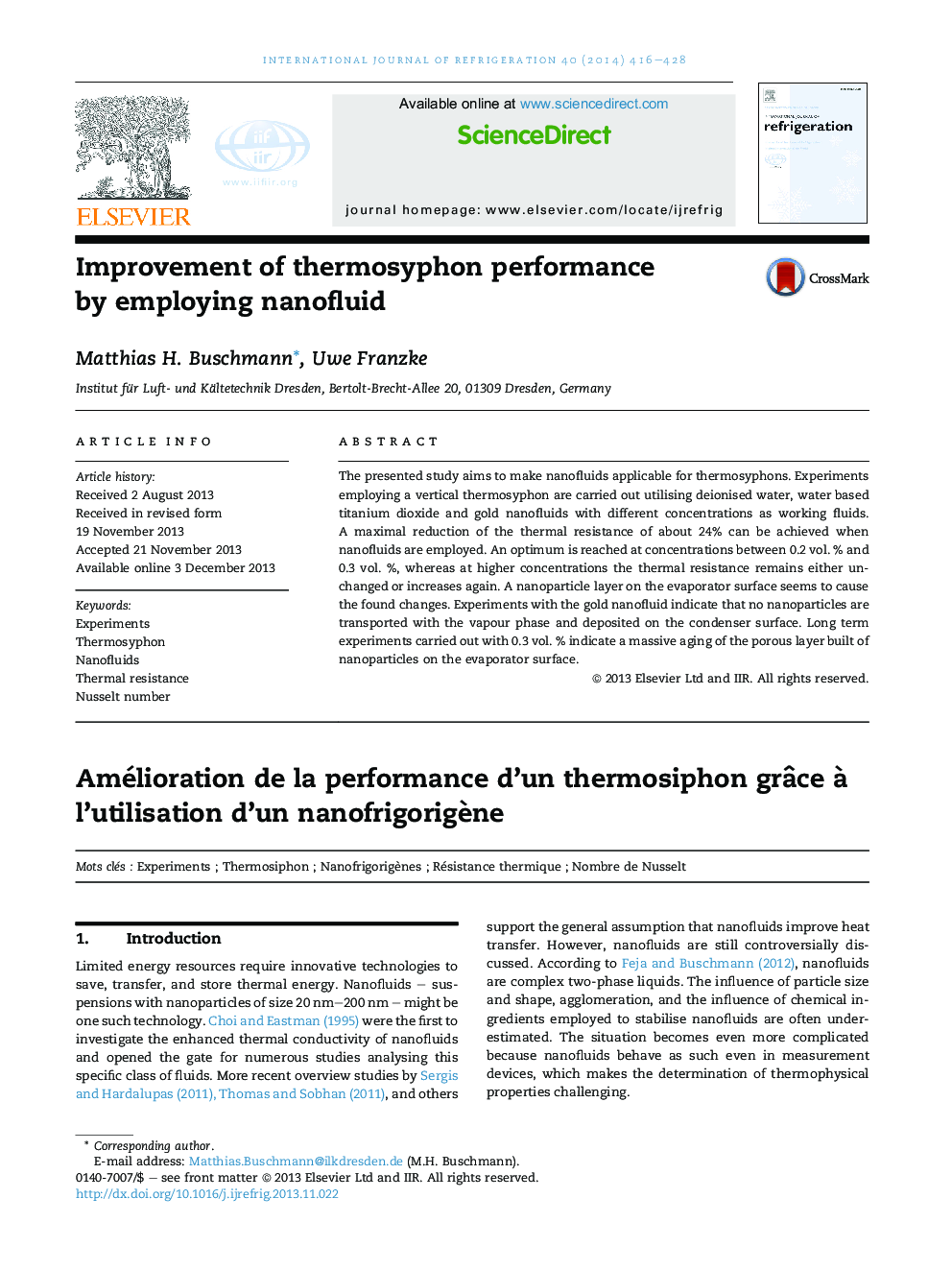| Article ID | Journal | Published Year | Pages | File Type |
|---|---|---|---|---|
| 789446 | International Journal of Refrigeration | 2014 | 13 Pages |
•Experiments in a vertical thermosyphon employing nanofluids are carried out.•Thermal resistance of the device reaches a minimum at concentrations of 0.2 vol. %.•A nanoparticle layer on the evaporator surface causes the found decrease.•For higher concentration the improvement degenerates.•Aging is a major problem when nanofluids are employed in thermosyphons.
The presented study aims to make nanofluids applicable for thermosyphons. Experiments employing a vertical thermosyphon are carried out utilising deionised water, water based titanium dioxide and gold nanofluids with different concentrations as working fluids. A maximal reduction of the thermal resistance of about 24% can be achieved when nanofluids are employed. An optimum is reached at concentrations between 0.2 vol. % and 0.3 vol. %, whereas at higher concentrations the thermal resistance remains either unchanged or increases again. A nanoparticle layer on the evaporator surface seems to cause the found changes. Experiments with the gold nanofluid indicate that no nanoparticles are transported with the vapour phase and deposited on the condenser surface. Long term experiments carried out with 0.3 vol. % indicate a massive aging of the porous layer built of nanoparticles on the evaporator surface.
